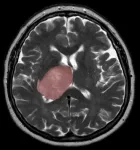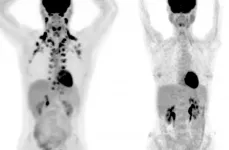(Press-News.org) COLUMBUS, Ohio - Scientists have developed a machine-learning method that crunches massive amounts of data to help determine which existing medications could improve outcomes in diseases for which they are not prescribed.
The intent of this work is to speed up drug repurposing, which is not a new concept - think Botox injections, first approved to treat crossed eyes and now a migraine treatment and top cosmetic strategy to reduce the appearance of wrinkles.
But getting to those new uses typically involves a mix of serendipity and time-consuming and expensive randomized clinical trials to ensure that a drug deemed effective for one disorder will be useful as a treatment for something else.
The Ohio State University researchers created a framework that combines enormous patient care-related datasets with high-powered computation to arrive at repurposed drug candidates and the estimated effects of those existing medications on a defined set of outcomes.
Though this study focused on proposed repurposing of drugs to prevent heart failure and stroke in patients with coronary artery disease, the framework is flexible - and could be applied to most diseases.
"This work shows how artificial intelligence can be used to 'test' a drug on a patient, and speed up hypothesis generation and potentially speed up a clinical trial," said senior author Ping Zhang, assistant professor of computer science and engineering and biomedical informatics at Ohio State. "But we will never replace the physician - drug decisions will always be made by clinicians."
The research is published today (Jan. 4, 2021) in Nature Machine Intelligence.
Drug repurposing is an attractive pursuit because it could lower the risk associated with safety testing of new medications and dramatically reduce the time it takes to get a drug into the marketplace for clinical use.
Randomized clinical trials are the gold standard for determining a drug's effectiveness against a disease, but Zhang noted that machine learning can account for hundreds - or thousands - of human differences within a large population that could influence how medicine works in the body. These factors, or confounders, ranging from age, sex and race to disease severity and the presence of other illnesses, function as parameters in the deep learning computer algorithm on which the framework is based.
That information comes from "real-world evidence," which is longitudinal observational data about millions of patients captured by electronic medical records or insurance claims and prescription data.
"Real-world data has so many confounders. This is the reason we have to introduce the deep learning algorithm, which can handle multiple parameters," said Zhang, who leads the Artificial Intelligence in Medicine Lab and is a core faculty member in the Translational Data Analytics Institute at Ohio State. "If we have hundreds or thousands of confounders, no human being can work with that. So we have to use artificial intelligence to solve the problem.
"We are the first team to introduce use of the deep learning algorithm to handle the real-world data, control for multiple confounders, and emulate clinical trials," Zhang said.
The research team used insurance claims data on nearly 1.2 million heart-disease patients, which provided information on their assigned treatment, disease outcomes and various values for potential confounders. The deep learning algorithm also has the power to take into account the passage of time in each patient's experience - for every visit, prescription and diagnostic test. The model input for drugs is based on their active ingredients.
Applying what is called causal inference theory, the researchers categorized, for the purposes of this analysis, the active drug and placebo patient groups that would be found in a clinical trial. The model tracked patients for two years - and compared their disease status at that end point to whether or not they took medications, which drugs they took and when they started the regimen.
"With causal inference, we can address the problem of having multiple treatments. We don't answer whether drug A or drug B works for this disease or not, but figure out which treatment will have the better performance," Zhang said.
Their hypothesis: that the model would identify drugs that could lower the risk for heart failure and stroke in coronary artery disease patients.
The model yielded nine drugs considered likely to provide those therapeutic benefits, three of which are currently in use - meaning the analysis identified six candidates for drug repurposing. Among other findings, the analysis suggested that a diabetes medication, metformin, and escitalopram, used to treat depression and anxiety, could lower risk for heart failure and stroke in the model patient population. As it turns out, both of those drugs are currently being tested for their effectiveness against heart disease.
Zhang stressed that what the team found in this case study is less important than how they got there.
"My motivation is applying this, along with other experts, to find drugs for diseases without any current treatment. This is very flexible, and we can adjust case-by-case," he said. "The general model could be applied to any disease if you can define the disease outcome."
INFORMATION:
The research was supported by the National Center for Advancing Translational Sciences, which funds the Center for Clinical and Translational Science at Ohio State.
Graduate student Ruoqi Liu and research assistant professor Lai Wei, both at Ohio State, also worked on the study.
#
Contact:
Ping Zhang,
Zhang.10631@osu.edu
Written by Emily Caldwell,
Caldwell.151@osu.edu
The healing process that follows a brain injury could spur tumour growth when new cells generated to replace those lost to the injury are derailed by mutations, Toronto scientists have found. A brain injury can be anything from trauma to infection or stroke.
The findings were made by an interdisciplinary team of researchers from the University of Toronto, The Hospital for Sick Children (SickKids) and the Princess Margaret Cancer Centre who are also on the pan-Canadian Stand Up To Cancer Canada Dream Team that focuses on a common brain cancer known as glioblastoma.
"Our data suggest that the right mutational change in particular cells in the brain could be modified by injury to give rise to a tumour," says Dr. Peter Dirks, Dream ...
Spintronics refers to a suite of physical systems which may one day replace many electronic systems. To realize this generational leap, material components that confine electrons in one dimension are highly sought after. For the first time, researchers created such a material in the form of a special bismuth-based crystal known as a high-order topological insulator.
To create spintronic devices, new materials need to be designed that take advantage of quantum behaviors not seen in everyday life. You are probably familiar with conductors and insulators, which permit and restrict the flow of electrons, respectively. ...
Some racial and ethnic groups suffer relatively more often, and fare worse, from common ailments compared to others. Prostate cancer is one disease where such health disparities occur: risk for the disease is about 75 percent higher, and prostate cancer is more than twice as deadly, in Blacks compared to whites. Yet whites are often overrepresented as research participants, making these differences difficult to understand and, ultimately, address.
With this problem in mind, scientists at the USC Center for Genetic Epidemiology and the Institute for Cancer Research, London, ...
Last year, more than fifty years after initial theoretical proposals, researchers in Pisa, Stuttgart and Innsbruck independently succeeded for the first time in creating so-called supersolids using ultracold quantum gases of highly magnetic lanthanide atoms. This state of matter is, in a sense, solid and liquid at the same time. "Due to quantum effects, a very cold gas of atoms can spontaneously develop both a crystalline order of a solid crystal and particle flow like a superfluid quantum liquid, i.e. a fluid able to flow without any friction" explains Francesca Ferlaino from the Institute for Quantum Optics and Quantum Information of the Austrian Academy of Sciences and the Department of Experimental Physics at the ...
Research from the University of Kent's Durrell Institute of Conservation and Ecology (DICE) has found that elephant ivory is still being sold on the online marketplace eBay, despite its 10-year-old policy banning the trade in ivory.
The trafficking of wildlife over the internet continues to be a problem, with the detection of illegal activity being challenging. Despite efforts of law enforcement, the demand for illegal wildlife products online has continued to increase. In some cases vendors have adopted the use of 'code words' to disguise the sale of illicit items.
Sofia Venturini ...
PORTLAND, Ore. - Researchers at Oregon State University have found that a few organisms in the gut microbiome play a key role in type 2 diabetes, opening the door to possible probiotic treatments for a serious metabolic disease affecting roughly one in 10 Americans.
"Type 2 diabetes is in fact a global pandemic and the number of diagnoses is expected to keep rising over the next decade," said study co-leader Andrey Morgun, associate professor of pharmaceutical sciences in the OSU College of Pharmacy. "The so-called 'western diet' - high in saturated fats and refined sugars - is one of the primary factors. But gut bacteria have an important role to play in modulating the effects of diet."
Formerly known as adult-onset diabetes, type 2 diabetes is a chronic condition ...
To make kefir, it takes a team. A team of microbes.
That's the message of new research from EMBL and Cambridge University's Patil group and collaborators, published in Nature Microbiology today. Members of the group study kefir, one of the world's oldest fermented food products and increasingly considered to be a 'superfood' with many purported health benefits, including improved digestion and lower blood pressure and blood glucose levels. After studying 15 kefir samples, the researchers discovered to their surprise that the dominant species of Lactobacillus ...
CORVALLIS, Ore. - Forest loss declined 18% in African nations where a new satellite-based program provides free alerts when it detects deforestation activities.
A research collaboration that included Jennifer Alix-Garcia of Oregon State University found that the Global Land Analysis and Discovery System, known as GLAD, resulted in carbon sequestration benefits worth hundreds of millions of dollars in GLAD's first two years.
Findings were published today in Nature Climate Change.
The premise of GLAD is simple: Subscribe to the system, launch a free web application, receive email alerts when the GLAD algorithm detects deforestation going on and then take action to save forests.
GLAD, launched in 2016, delivers alerts created ...
CHAMPAIGN, Ill. -- Cities only occupy about 3% of the Earth's total land surface, but they bear the burden of the human-perceived effects of global climate change, researchers said. Global climate models are set up for big-picture analysis, leaving urban areas poorly represented. In a new study, researchers take a closer look at how climate change affects cities by using data-driven statistical models combined with traditional process-driven physical climate models.
The results of the research led by University of Illinois Urbana Champaign engineer Lei Zhao are published in the journal Nature Climate Change.
Home to more than 50% of the world's population, cities experience more heat stress, water scarcity, air pollution ...
Brown fat is that magical tissue that you would want more of. Unlike white fat, which stores calories, brown fat burns energy and scientists hope it may hold the key to new obesity treatments. But it has long been unclear whether people with ample brown fat truly enjoy better health. For one thing, it has been hard to even identify such individuals since brown fat is hidden deep inside the body.
Now, a new study in Nature Medicine offers strong evidence: among over 52,000 participants, those who had detectable brown fat were less likely than their peers to suffer cardiac and metabolic conditions ranging from type 2 diabetes to coronary artery disease, which ...




